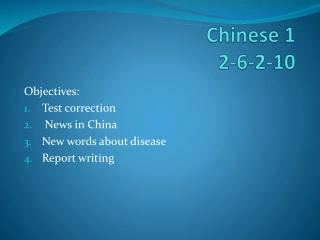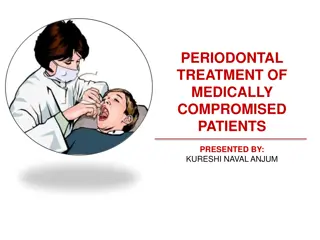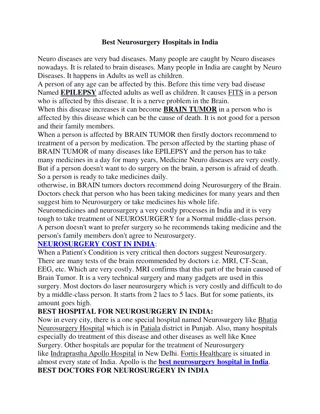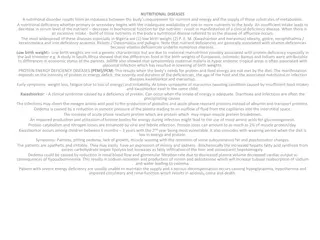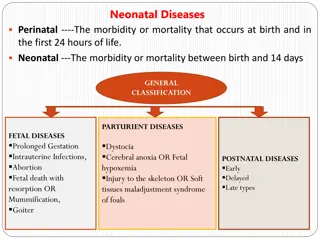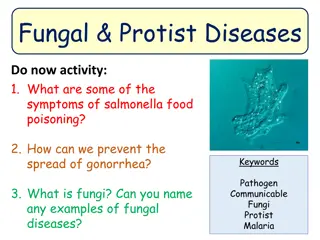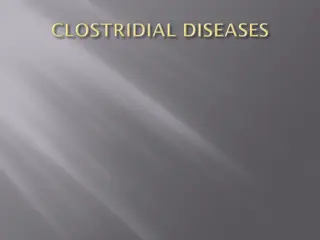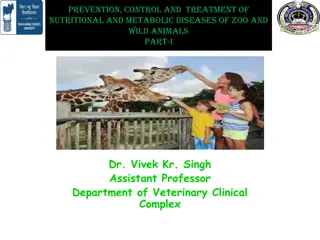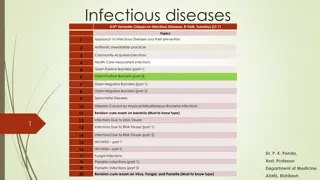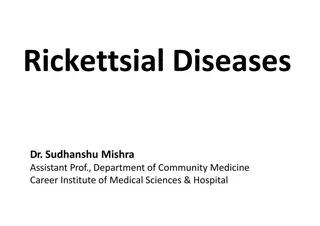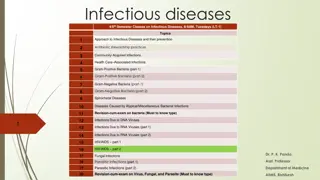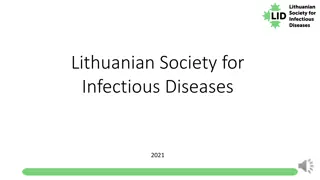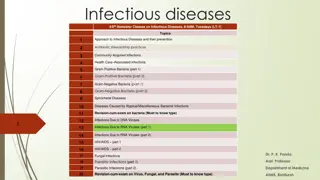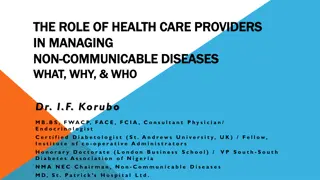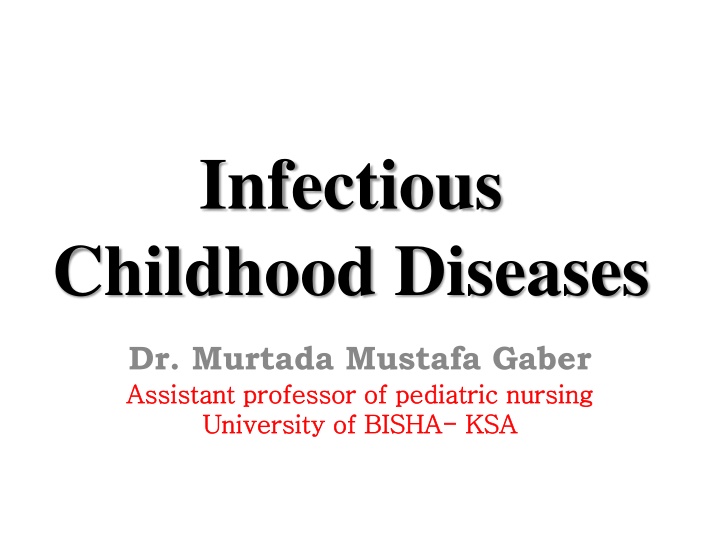
Understanding Childhood Infectious Diseases and Tuberculosis Management
Explore the world of childhood infectious diseases with Assistant Professor Dr. Murtada Mustafa Gaber. Learn about modes of transmission, prevention measures, and nursing care for infectious childhood diseases. Dive into the specifics of Tuberculosis, including its symptoms, transmission, treatment, and prevention strategies.
Uploaded on | 2 Views
Download Presentation

Please find below an Image/Link to download the presentation.
The content on the website is provided AS IS for your information and personal use only. It may not be sold, licensed, or shared on other websites without obtaining consent from the author. If you encounter any issues during the download, it is possible that the publisher has removed the file from their server.
You are allowed to download the files provided on this website for personal or commercial use, subject to the condition that they are used lawfully. All files are the property of their respective owners.
The content on the website is provided AS IS for your information and personal use only. It may not be sold, licensed, or shared on other websites without obtaining consent from the author.
E N D
Presentation Transcript
Infectious Childhood Diseases Dr. Murtada Mustafa Gaber Assistant professor of pediatric nursing Assistant professor of pediatric nursing University of BISHA University of BISHA- - KSA KSA
Learning objectives Learning objectives By the end of this lecture the student should be able to: o Define infectious childhood disease. o Explain mode of transmission of infectious childhood diseases. o Identify period of communicability of infectious childhood diseases. o Appreciate isolation measure for infectious childhood diseases.
oList complications of infectious childhood diseases. oIdentify preventive measures of infectious childhood diseases. oExplain nursing care for infectious childhood diseases.
Communicable diseases in Communicable diseases in children children Definition Childhood infectious disease is a clinically evident illness resulting from the presence of pathogenic microbial agents that have capability to transmit between persons specially in childhood period.
Tuberculosis Tuberculosis It is bacterial disease caused by mycobacterium tuberculosis. Usually affect the lunges Risk factor: Over crowd Poor housing Incubation period: 4 12 weeks.
Case definition: It is cough more than three weeks not respond to usual antibiotics with night fever for more than one month associated with night sweet and weight loss and bloody sputum. Mode of transmission: Respiratory droplet Milk of affected animals (cows)
Treatment: Antibiotics?? For 6 months Patient must be commitment to not discontinue the treatment. Complications: Delay in growth and development Chronic tuberculosis.
Prevention: BCG vaccination (day one to one year) Nursing Care: Children with active tuberculosis disease should be excluded until the child is on adequate anti-tuberculosis medication. Isolation respiratory Adequate nutrition. Adherence to medication regimen
Poliomyelitis Poliomyelitis Definition: It is highly infectious viral disease affected nerves system and may cause paralysis, disability or death. Common in children under 5 years.
Mode of transmition: Droplet Fecal-oral The virus attack the nerves system. Patient spread the disease 7 10 days before and after appearance of signs and symptoms. Patient can spread the virus through feces up to 3 6 weeks.
Treatment: No specific treatment Symptomatic treatment. Prevention: 4 doses of poliomyelitis vaccine Previous affected children become protected for long life from poliomyelitis.
Signs and symptoms: Mainly no significant signs and symptoms In rare cases fever, headach, sore throat and nausea and vomiting Paralysis develop after 3 days of infection (start in legs, hands, face and neck) Paralysis of respiratory muscles.
Nursing care Position to maintain body alignment and prevent contractures during paralytic phase Analgesics for pain, mild sedatives for anxiety and promote rest Use hot moist packs and ROM Observe for respiratory paralysis
Hepatitis B virus Hepatitis B virus It is a viral infection of the liver. Signs and Symptoms: Malaise Abdominal pain loss of appetite / refuse feeding. Nausea Fever jaundice, dark urine and pale faces.
Mode of Transmission Blood-to-blood; sexual contact; during birth mother-to-baby Incubation period 45 to 180 days (average 60 to 90 days) Infectious period Weeks before to months after onset. Carriers may be infectious for life
Treatment Symptomatic treatment. Nursing care: Hydration. Increase carbohydrate intake Management of fever. Monitor bilirubin level.
Diphtheria Diphtheria Definition: It is bacterial disease cased by Crynebacterium diphtheri. Mode of transmission: Direct (droplet) Indirect (soiled articles ).
The bacteria release toxins harming the body system. Affect throat, pharynx Incubation peroid: Usually 2-5 days Contagious: For 2 4 weeks.
Signs and symptoms: Common cold Anorexia malaise low fever pharyngitis In sever cases air way obstructed Case definition: Throat infection with gray layer in throat associated with difficulty in breathing.
Treatment: Antibiotics. Tracheostomy for airway obstruction Nursing care: Maintain strict isolation in hospital Complete bed rest Observe respirations for signs of obstruction Oxygen as needed
Whooping Cough (Pertussis) Whooping Cough (Pertussis) Caused by Bordtella pertussis bacteria Incubation period: 6-20 days Contagious: Through 4th week of symptoms
Mode of transmission: oDirect contact: Respiratory droplet of infected oIndirect contact: Sharing anything that is put in the mouth Touching articles freshly soiled by an infected person.
Signs and Symptoms Begins with runny nose, sneezing, followed several days later by a dry cough for 1 2 months Coughing can become severe and occur in spells often followed by vomiting or a characteristic high-pitched whoop when inhaling. Fever is absent or minimal.
Nursing Care Bed rest and no school attendance until well and with at least 5 days of appropriate antibiotic therapy. Isolation during catarrhal stage in hospital, respiratory precautions Provide high humidity Observe for s/s of airway obstruction
Preventive Measures Vaccination with Pentavelant.
Tetanus Tetanus It is bacterial disease caused by Clostridium tetani The bacteria produce a toxin that affects the nervous system. Signs and Symptoms Lockjaw, dysphagia, painful muscle spasms. In neonate: refuse feeding and tetani.
Mode of transmission Penetrating skin wounds contaminated by soil, animal or human faces Contaminated sharps used for cutting umbilical cord or circumcision. Incubation period Usually 3 to 21 days. Period of Communicability Not communicable person-to-person
Treatment Wound care. Anti tetanus. Antibiotic Complication Fracture spine due to tetani. Pneumonia Death.
Prevention: Immunization of women in age (15 45) Use aseptic technique during delivery. Pentavelant vaccine. Nursing care: Instruct the pregnant mothers to have tetanus vaccine Avoid use of septic equipment in delivery or circumcision. Use seizure precautions for tetani attack.
Haemophilus Haemophilus Influenzae Influenzae type type B B Hib bacteria cause epiglottitis, bacteremia, pneumonia, ear infections, bronchitis, and other respiratory illnesses caused by other types of H. influenza bacteria. Usually caused meningitis Signs and symptoms: Fever, bulging fontanel, neck and back stiffness.
Mode of transmission Direct: through air droplet Indirect: contact with secretions from the nose and throat of an infected person. Close face to face contact Sharing food, drinks, bottles, or toys used by other children
Incubation period 2 4 days. Period of Communicability As long as the organism is present. The child is no longer contagious after receiving 24 48 hours of antibiotics
Prevention Pentavelant vaccine. Hygienic measures. Complications Increase ICP Vertigo Deafness Mental retardation.
Diarrheal diseases caused by Diarrheal diseases caused by rota rota virus virus Rotavirus is the most common cause of severe diarrhea among young children. It usually affects children between the ages of 6 months and 2 years.
Signs and symptoms Fever (may be as high as 40 C) Vomiting About 12 24 hours later, child starts to pass large amounts of watery diarrhea Abdominal pain The illness usually lasts 3 7 days
Mode of transmission oDirect contact: Changing an infected child s diaper Assisting a child with toileting oIndirect contact: Touching an object that was contaminated with rotavirus. The virus is able to survive for long periods on hard surfaces, in contaminated water, and on hands
Incubation period The acute stage of illness and until diarrhea stops (1 3 days) Rotavirus is not usually found in children s stool after the 8th day of infection. Prevention Rota virus vaccine. Hand washing is the best way to stop the spread of infections
Complications Dehydration Electrolytes disturbance Nursing care: Monitor intake and out put Rehydration Monitor signs of electrolyte disturbance.
Pneumococcal bacteria diseases Pneumococcal bacteria diseases It various disease caused by pneumococcal bacteria. It include: Pneumonia, Meningitis, Septicemia, Middle ear infection and Rheumatoid diseases. Diagnosis is confirmed with a test of blood and cerebrospinal fluid (CSF)
Signs and symptoms According to types of disease Meningococcal meningitis: Fever with convulsion/ neck stiffness/ bulging fontanel and sever headache. Pneumonia and septicemia: Increase RR, fever, refusal of feeding, convulsion, chest endowing, and confusion.
Mode of transmission Direct contact with the nose and throat secretions of an infected person Indirect with sharing anything that is put in the mouth. Breathing air contaminated by the bacteria when an infected person has coughed or sneezed
Incubation period Range is 2 10 days (usually 3 4 days) Period of Communicability From 7 days prior to the onset of symptoms until 24 hours after antibiotics are started. Treatment Antibiotics but it show resistance in many cases.
Prevention Occlusive breast feeding Good weaning practice Avoid contact with person with RTI Pneumococcal vaccine
Measles Measles It is viral infection caused by Measles virus Signs and Symptoms Fever, cough, red and watery eyes A blotchy red rash appears on the 3rdto 7thday of illness, starting around the face and hairline, lasts from 4 to 7 days. Koplik spots (small lesions with bluish or white centers).
Mode of transmission oDirect contact by droplet spread and by direct contact with nasal or throat secretions of infected individuals. oIndirect contact with items freshly soiled with contaminated nose and throat secretions. Measles is extremely contagious
Incubation Period 7to 21 days from exposure to onset of fever (average of 10 days), and usually 14 days from exposure until appearance of rash Period of Communicability From approximately 4 days before onset of rash to 4 days after rash appears.
Diagnosis Measles infection can be confirmed only through a blood test. Treatment Vitamin A supplement to prevent eye infection. Antipyretics and bed rest during fevers Antibiotics to prevent secondary infections Children need comfort measures for the rash
Complications Otitis media, pneumonia, , encephalitis myocarditis laryngitis Nursing care: Isolation until 5th day of rash in hospital with respiratory precautions Administer antipyretics Dim lights if photophobia, keep child from rubbing eyes
Mumps Mumps Mumps is an infectious disease characterized by swelling of one or more of the salivary glands, usually the parotid glands. At onset of illness, a child may have a fever followed by swelling near the angle of the jaw and in front of the ear. Cause Mumps virus
Mode of transmission Direct contact with respiratory secretions. Incubation Period Usually 16 to 18 days Period of Communicability From 3 days before symptoms appear to about 9 after illness onset.

